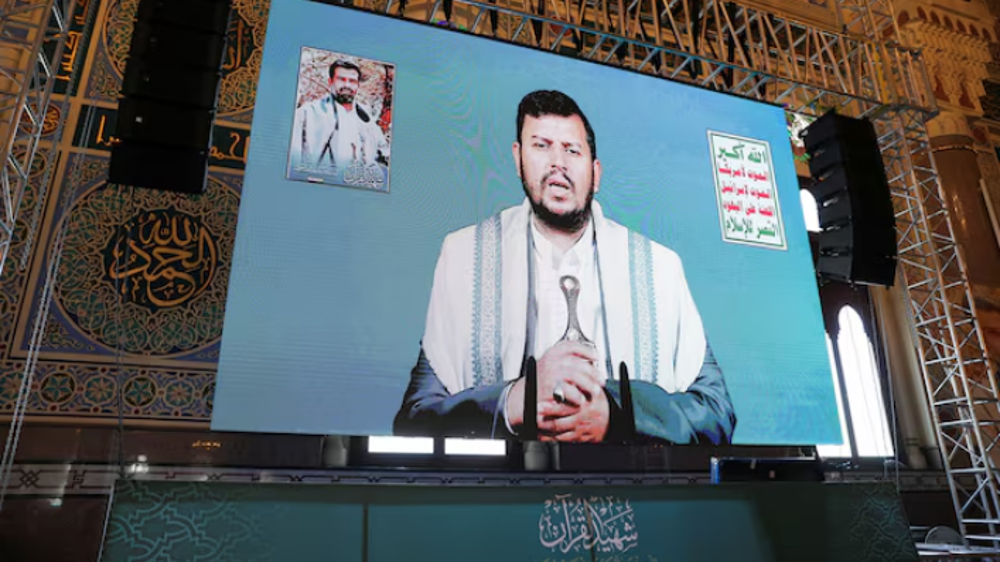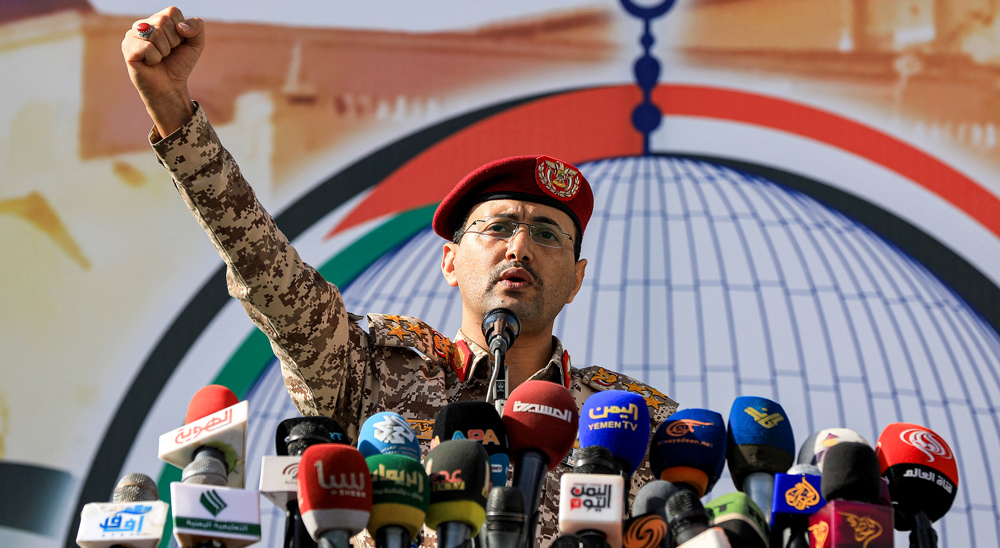Saudi warplanes target residential areas, military college in Yemeni capital
Saudi warplanes have carried out nearly 20 airstrikes against the Yemeni capital Sana'a as the war on the impoverished country continues unabated.
Yemen’s Arabic-language al-Masirah television network reported on Monday that Sana’a’s al-Atan and al-Nahedin neighborhoods, a military college, al-Dailami and al-Hafta bases and a television building were targeted in the Saudi air raids.
It added that later in the day the Saudi fighter jets carried out more strikes against al-Hafta base and an area behind the television building.
طيران العدوان يشن سلسلة غارات على العاصمة صنعاء#المسيرة #المسيرة_نتhttps://t.co/ksI38W78Cj
— قناة المسيرة (@almasirah) March 30, 2020
There have been no conclusive reports on the overall extent of the damage and casualties of the Saudi aerial aggression. Early reports, however, indicate that 2 people have been injured and one killed after Saudi warplanes attacked the military college in Sana'a.
The Saudi airstrikes came a day after Yemeni army said that it had carried out reprisal drone and missile attacks over the Saudi capital Riyadh and another city in the Arab kingdom in retaliation for years of Saudi war on impoverished Yemen.
Following the Yemeni aerial attacks, Saudi state media claimed that at least one ballistic missile and a rocket had been intercepted over Riyadh and the southwestern city of Jizan. However, a spokesperson for Saudi Arabia’s Civil Defense said two people were wounded in the strikes. The contradictory accounts were not explained by Saudi authorities.
The latest missile retaliation was the first against the kingdom since September when the Yemeni army hit Saudi oil installations with ballistic missiles.
The Saudi airstrikes against Sana'a on Monday occurred as the bloody campaign led by the Riyadh regime against its southern neighbor just entered its sixth year.
Analysts say the range of Yemeni ballistic missiles has increased significantly so they can reach the Saudi capital, in what it seen as a game changer in the ongoing war on Yemen.
In March 2015, Saudi Arabia, with the help of a number of its allies, particularly the United Arab Emirates (UAE), launched the war against Yemen, whose former President Abd Rabbuh Mansur Hadi had fled to Riyadh a few months earlier.
The Saudi war, code-named Operation Decisive Storm, was launched to achieve bringing Hadi, a staunch ally of Riyadh, back to power, and to crush the popular Houthi Ansarullah movement, whose fighters have proved to be of significant help to the Yemeni army in defending the Arab country against the invaders since the onset of the imposed war.
At the onset of the war, which began with an aerial campaign, Saudi rulers and the kingdom’s then defense minister, Prince Mohammed bin Salman, was expecting an easy victory in Yemen within a couple of weeks.
However, despite spending millions of dollars, mustering US and UK-made weapons, and employing foreign mercenaries, particularly from Sudan, the Saudi regime has deeply bogged down in Yemen and has practically failed in achieving both of its so-called objectives.
Ex-president Hadi is still in Riyadh and Houthi fighters are defending Yemen along with the Yemeni army and the Popular Committees.
The Saudi war has killed tens of thousands of Yemenis, and decimated Yemen's infrastructures.
The US-based Armed Conflict Location and Event Data Project (ACLED), a nonprofit conflict-research organization, estimates that the war has claimed more than 100,000 lives.
Riyadh and its allies have been widely criticized for the high civilian death toll resulted from their bombing campaign in Yemen.
The United Nations says over 24 million Yemenis are in dire need of humanitarian aid, including 10 million suffering from extreme levels of hunger.
A number of international efforts to restore peace and end the bloody war have failed.
VIDEO | Iranians celebrate National Girls’ Day in Lady Fatima Masoumah’s Holy Shrine
UN to vote on Palestinian statehood as student protests continue
Houthi: Yemen to target Israel-linked ships regardless of destination
UK holds firm on arms exports to Israel despite Rafah invasion
Putin says Russia’s nuclear forces ‘always on alert’
New York Times’ Pulitzer Prize for Gaza war coverage a travesty of journalism
Campus protests: Iran says US, Europe value Israel above human rights
VIDEO | Academia, media, states should be active players against Zionist project












 This makes it easy to access the Press TV website
This makes it easy to access the Press TV website